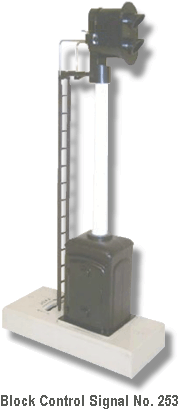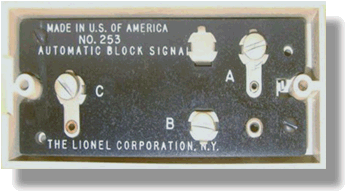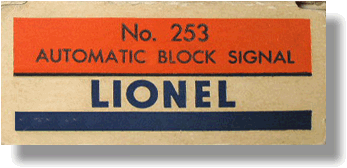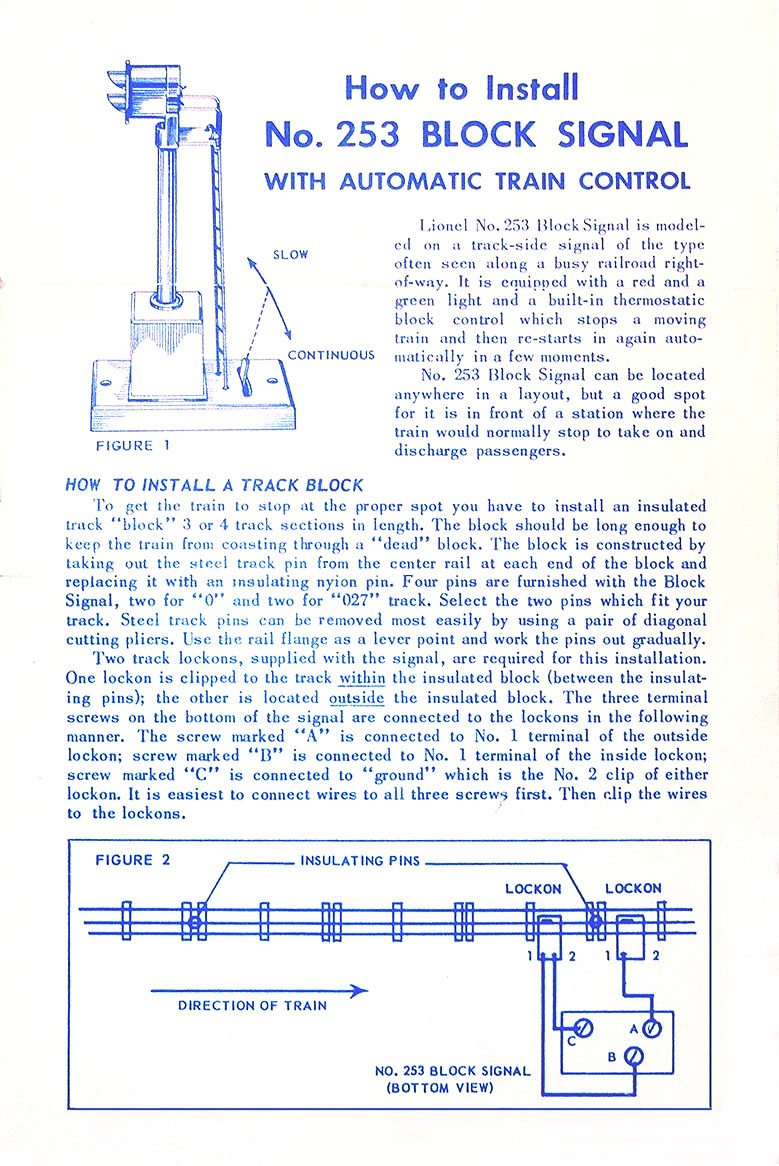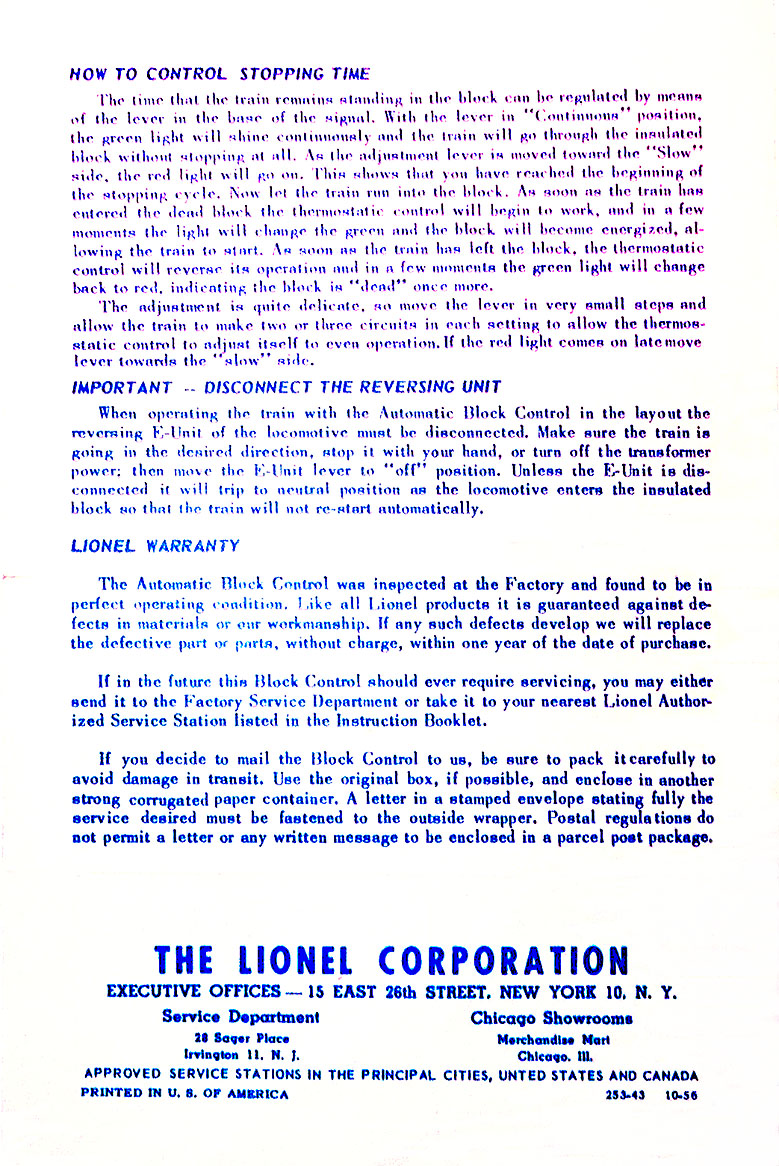First produced in 1956, the No. 253 would be the first accessory to use the new two pin lamps. The only voltage available for these lamps, No. L12(R) and No. L12(G), in 1956 was rated at 6 to 8 volts. To operate these lamps a resistor was needed to drop the normal track voltage from 12 to 16 volts. This is the only accessory that used these lamps.

By 1957, when a 14 volt version of these lamps was available, all of the No. 253 Block Signals produced after 1956 used No. L19(R) and No. L19(G) lamps. |
|
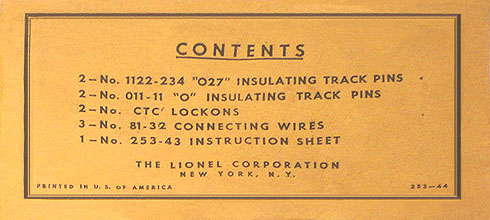 |
